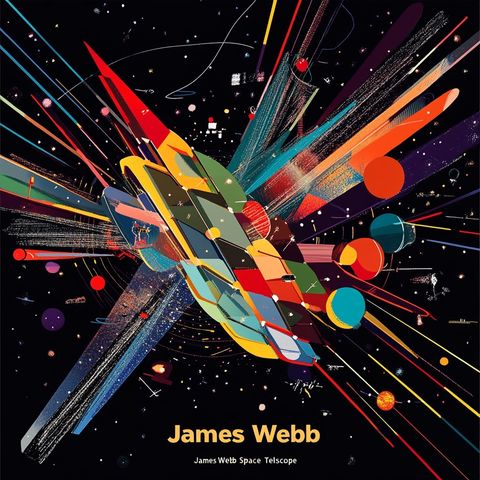
Contacts
Info
James Webb Space Telescope Podcast OutlineEpisode 1: Introduction to the James Webb Space Telescope - What is the James Webb Space Telescope? - Why is it so important? - What...
show more- What is the James Webb Space Telescope?
- Why is it so important?
- What are its goals?
- How does it work?
- What kind of discoveries can we expect from it?
- What are the latest images and data from the James Webb Space Telescope?
- What have we learned about the universe so far?
- What are some of the most exciting discoveries yet to come?
- What are exoplanets?
- How can the James Webb Space Telescope help us find and study them?
- What are some of the most promising exoplanet candidates?
- Could the James Webb Space Telescope help us find evidence of life beyond Earth?
- What can the James Webb Space Telescope tell us about the early universe?
- How did the first stars and galaxies form?
- What role did dark matter and dark energy play in the evolution of the universe?
- How will the James Webb Space Telescope change the way we study the universe?
- What are some of the most exciting scientific questions that it could answer?
- What can we expect from the next generation of space telescopes?
- How can the public get involved with the James Webb Space Telescope?
- Where can you find images, data, and other information about the telescope?
- How can you talk to scientists and engineers who are working on the project?
- What role will the James Webb Space Telescope play in future space exploration missions?
- How can it help us prepare for human missions to Mars and beyond?
- What are the ethical implications of the James Webb Space Telescope and other powerful space telescopes?
- What can the James Webb Space Telescope teach us about our place in the universe?
- Are we alone?
- What is our future as a spacefaring species?

James Webb Space Telescope Podcast OutlineEpisode 1: Introduction to the James Webb Space Telescope - What is the James Webb Space Telescope? - Why is it so important? - What...
show more- What is the James Webb Space Telescope?
- Why is it so important?
- What are its goals?
- How does it work?
- What kind of discoveries can we expect from it?
- What are the latest images and data from the James Webb Space Telescope?
- What have we learned about the universe so far?
- What are some of the most exciting discoveries yet to come?
- What are exoplanets?
- How can the James Webb Space Telescope help us find and study them?
- What are some of the most promising exoplanet candidates?
- Could the James Webb Space Telescope help us find evidence of life beyond Earth?
- What can the James Webb Space Telescope tell us about the early universe?
- How did the first stars and galaxies form?
- What role did dark matter and dark energy play in the evolution of the universe?
- How will the James Webb Space Telescope change the way we study the universe?
- What are some of the most exciting scientific questions that it could answer?
- What can we expect from the next generation of space telescopes?
- How can the public get involved with the James Webb Space Telescope?
- Where can you find images, data, and other information about the telescope?
- How can you talk to scientists and engineers who are working on the project?
- What role will the James Webb Space Telescope play in future space exploration missions?
- How can it help us prepare for human missions to Mars and beyond?
- What are the ethical implications of the James Webb Space Telescope and other powerful space telescopes?
- What can the James Webb Space Telescope teach us about our place in the universe?
- Are we alone?
- What is our future as a spacefaring species?
Information
| Author | QP-1 |
| Organization | William Corbin |
| Categories | Astronomy , Technology , Animation & Manga |
| Website | - |
| corboo@mac.com |
Copyright 2024 - Spreaker Inc. an iHeartMedia Company
